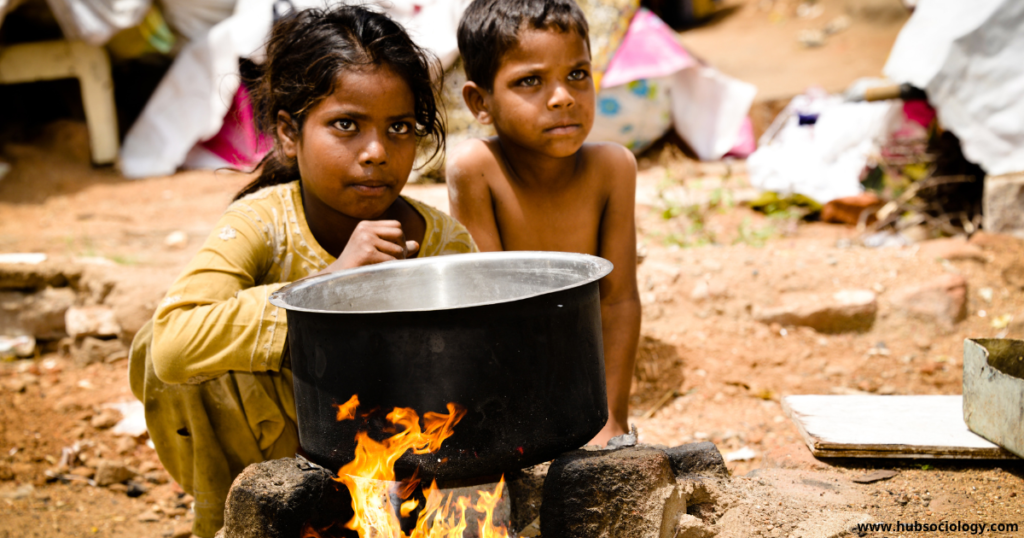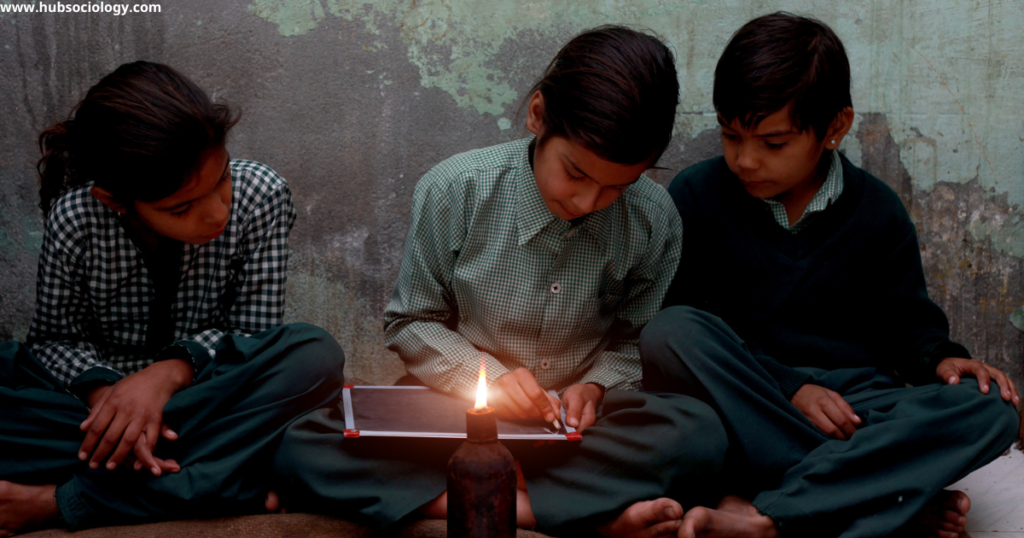Introduction

Jyotirao Govindrao Phule (1827–1890), popularly known as Mahatma Jotiba Phule, was a pioneering social reformer, thinker, and activist in 19th-century India. His work laid the foundation for anti-caste movements and the empowerment of marginalized communities, including Shudras, Ati-Shudras (Dalits), and women. From a sociological perspective, Phule’s contributions were revolutionary as he challenged the entrenched Brahmanical social order, advocated for education as a tool of liberation, and constructed an alternative discourse on social justice.
This article examines Phule’s movements for marginalized groups through a sociological lens, analyzing his critique of caste, his advocacy for education, gender equality, and his role in shaping the social reform movements in colonial India.
1. Phule’s Sociological Critique of the Caste System
1.1 The Brahmanical Hegemony and Caste Oppression
Phule’s analysis of Indian society was rooted in a radical critique of Brahmanical dominance. Unlike many contemporary reformers who sought to reform Hinduism from within, Phule rejected the religious sanctity of the caste system. He argued that the caste hierarchy was not divinely ordained but a social construct designed to maintain Brahmin supremacy and exploit lower castes.
In his seminal work, Gulamgiri (Slavery, 1873), Phule drew parallels between the oppression of Black slaves in America and the subjugation of Shudras and Ati-Shudras in India. He traced the origins of caste oppression to the Aryan invasion theory (later debated by historians), suggesting that Brahmins, as descendants of Aryans, had imposed an exploitative social order on indigenous populations.
1.2 Phule’s Concept of “Stree-Shudra-Ati-Shudra” Exploitation
Phule expanded the category of marginalized groups beyond the conventional Shudras to include women and Ati-Shudras (untouchables). He argued that Brahmanical patriarchy and caste worked in tandem to oppress these groups. Women, irrespective of caste, were denied education and autonomy, while Shudras and Ati-Shudras were subjected to forced labor and social ostracization.
His concept of “Trutiya Ratna” (The Third Eye) emphasized the need for Shudras and Ati-Shudras to develop critical consciousness to break free from mental slavery imposed by Brahmanical ideology.
2. Education as a Tool for Social Liberation
2.1 Establishment of Schools for Marginalized Groups
Phule recognized education as a primary instrument for social emancipation. In 1848, he and his wife, Savitribai Phule, opened the first school for girls in Pune, challenging the prevailing norms that denied education to women and lower castes. By 1852, they had established multiple schools for Shudra and Ati-Shudra children.
This initiative was revolutionary because:
- It defied the Brahmin monopoly over education.
- It promoted rational and secular education over religious indoctrination.
- It empowered marginalized groups to question their oppression.
2.2 Critique of Brahminical Education
Phule criticized the traditional Gurukul system, which was accessible only to upper castes. He argued that Brahminical education reinforced caste hierarchies by teaching religious texts that legitimized inequality. Instead, he advocated for a modern, scientific, and inclusive education system that would enable oppressed castes to participate in public life.
His ideas foreshadowed later Dalit and feminist pedagogical approaches that emphasize education as a means of consciousness-raising.
3. Gender Equality and Women’s Empowerment

3.1 Advocacy for Women’s Rights
Phule was one of the first Indian thinkers to systematically address gender oppression. He linked caste and gender subjugation, arguing that Brahmanical patriarchy enforced strict control over women’s sexuality and labor to maintain caste purity.
Key contributions include:
- Opposition to Child Marriage and Widow Exploitation: Phule condemned child marriage and the ill-treatment of widows, advocating for widow remarriage.
- Savitribai Phule’s Role: His wife, Savitribai, became India’s first female teacher and a symbol of women’s resistance. Together, they established a shelter for widows and rape survivors (Balhatya Pratibandhak Griha).
- Critique of Manusmriti: Phule rejected the Manusmriti for its oppressive gender and caste laws, calling for a complete overhaul of Hindu social codes.
3.2 Intersectionality in Phule’s Thought
Phule’s approach was intersectional—he understood that caste, class, and gender oppression were interlinked. His advocacy for women’s education was not limited to upper-caste women but extended to Dalit and peasant women who faced multiple layers of discrimination.
4. The Satyashodhak Samaj and Alternative Social Order
4.1 Formation and Objectives
In 1873, Phule founded the Satyashodhak Samaj (Society of Truth-Seekers), a radical organization aimed at:
- Rejecting Brahminical priesthood and promoting secular marriages.
- Encouraging self-respect among lower castes.
- Advocating for land rights and economic justice for peasants.
The Samaj provided an alternative social framework where Shudras, Ati-Shudras, and women could assert their rights without Brahmin intermediation.
4.2 Influence on Later Movements
Phule’s ideas influenced:
- The Dalit Movement: B.R. Ambedkar acknowledged Phule as a forerunner of Dalit liberation.
- Non-Brahmin Movements: The Samaj inspired the anti-Brahmin movements in Maharashtra and the Dravidian movement in South India.
- Feminist Thought: Early Indian feminists drew from Phule’s critique of patriarchy.
5. Phule’s Legacy in Contemporary Sociology
5.1 Contributions to Social Theory
Phule’s work provides critical insights for sociological theories on:
- Power and Domination: His analysis of Brahmanical hegemony aligns with Gramsci’s concept of cultural hegemony.
- Social Stratification: He highlighted how caste operates as a rigid system of social closure.
- Education and Social Change: His emphasis on education as liberation resonates with Freire’s Pedagogy of the Oppressed.
5.2 Relevance in Modern India
Despite constitutional safeguards, caste and gender oppression persist in India. Phule’s ideas remain relevant in understanding:
- The continued dominance of upper castes in education and employment.
- The struggles of Dalit and Adivasi communities for dignity.
- The intersection of caste and gender violence.
Conclusion
Jotiba Phule was not just a social reformer but a revolutionary sociologist who deconstructed the structures of caste and patriarchy. His movements for marginalized groups were rooted in a radical vision of equality, justice, and human dignity. By establishing schools, challenging Brahmanical texts, and founding the Satyashodhak Samaj, he created a counter-hegemonic discourse that continues to inspire anti-caste and feminist movements.

For sociology students, Phule’s work offers a framework to analyze power, resistance, and social transformation in deeply stratified societies. His legacy reminds us that social justice requires not just reform but a fundamental reimagining of societal structures.
Topic Related Questions
5-Mark Questions (Short Answer Type)
- Who was Jotiba Phule, and what was his contribution to social reform in India?
- Explain the significance of the Satyashodhak Samaj in Phule’s movement.
- How did Jotiba Phule view the caste system in India?
- What role did education play in Phule’s movement for marginalized groups?
- Discuss Phule’s critique of Brahmanical patriarchy.
- Why is Jotiba Phule considered a pioneer of women’s education in India?
- What was the objective behind Phule’s book Gulamgiri?
- How did Phule’s ideas influence later social reformers like B.R. Ambedkar?
- What were the key features of Phule’s educational reforms?
- Explain Phule’s concept of “Trutiya Ratna” (The Third Eye).
- What was the significance of Phule’s Balhatya Pratibandhak Griha?
- How did Phule’s upbringing influence his social reform ideas?
- Explain Phule’s views on widow remarriage.
- What was Phule’s stance on religious conversion as a means of liberation?
- How did British colonial rule impact Phule’s reform movements?
- What were the main objectives of Phule’s schools for girls and lower castes?
- How did Phule use folk literature to spread his anti-caste message?
- Why did Phule criticize the Manusmriti?
- What role did Savitribai Phule play in Jotiba’s movements?
- How did Phule’s ideas differ from those of contemporary reformers like Raja Ram Mohan Roy?
10-Mark Questions (Descriptive Answer Type)
- Analyze Jotiba Phule’s critique of the caste system and its impact on marginalized communities.
- Discuss the role of Satyashodhak Samaj in challenging Brahmanical dominance in 19th-century India.
- Examine Phule’s contributions to women’s education and empowerment in colonial India.
- How did Jotiba Phule link caste oppression with gender oppression? Explain with examples.
- Compare and contrast Phule’s and Ambedkar’s approaches to caste annihilation.
- Evaluate the significance of Phule’s Gulamgiri in the anti-caste movement.
- Discuss the relevance of Phule’s ideas in contemporary debates on caste and social justice.
- Explain how Phule’s educational reforms aimed at social liberation of the oppressed.
- What were the major challenges faced by Phule in his social reform movements?
- Analyze Phule’s perspective on religion and its role in sustaining caste hierarchies.
15-Mark Questions (Essay-Type/Long Answer Type)
- Critically examine Jotiba Phule’s role as a social reformer with special reference to his movements for Shudras, Ati-Shudras, and women.
- “Jotiba Phule was not just a social reformer but a revolutionary sociologist.” Discuss this statement in the context of his critique of caste and gender.
- Analyze the impact of Phule’s Satyashodhak Samaj on the non-Brahmin movements in Maharashtra and South India.
- Discuss Phule’s vision of education as a tool for social emancipation. How did his ideas influence modern Indian education policies?
- Compare Phule’s and Ambedkar’s ideologies in the struggle against caste oppression. What similarities and differences do you find?
- “Phule’s movement was a precursor to the Dalit and feminist movements in India.” Elaborate on this statement.
- Evaluate the relevance of Phule’s ideas in today’s context of caste discrimination and affirmative action in India.
- How did Phule’s writings and activism challenge the dominant Brahmanical narrative of Indian society?
- Discuss the intersectionality of caste, class, and gender in Phule’s social reform movements.
- “Phule’s Gulamgiri was a radical text that exposed the exploitation of lower castes.” Critically analyze this statement.
Bonus: Applied Sociology Questions (Case Study-Based)
- Imagine you are conducting fieldwork in a village where caste discrimination persists. How would Phule’s strategies help in mobilizing marginalized groups? (15 Marks)
- If Phule were alive today, how would he respond to the rise of Hindutva politics and caste-based violence? (10 Marks)
- Design a sociological research project to study the impact of Phule’s ideas on Dalit youth in urban India. (15 Marks)
